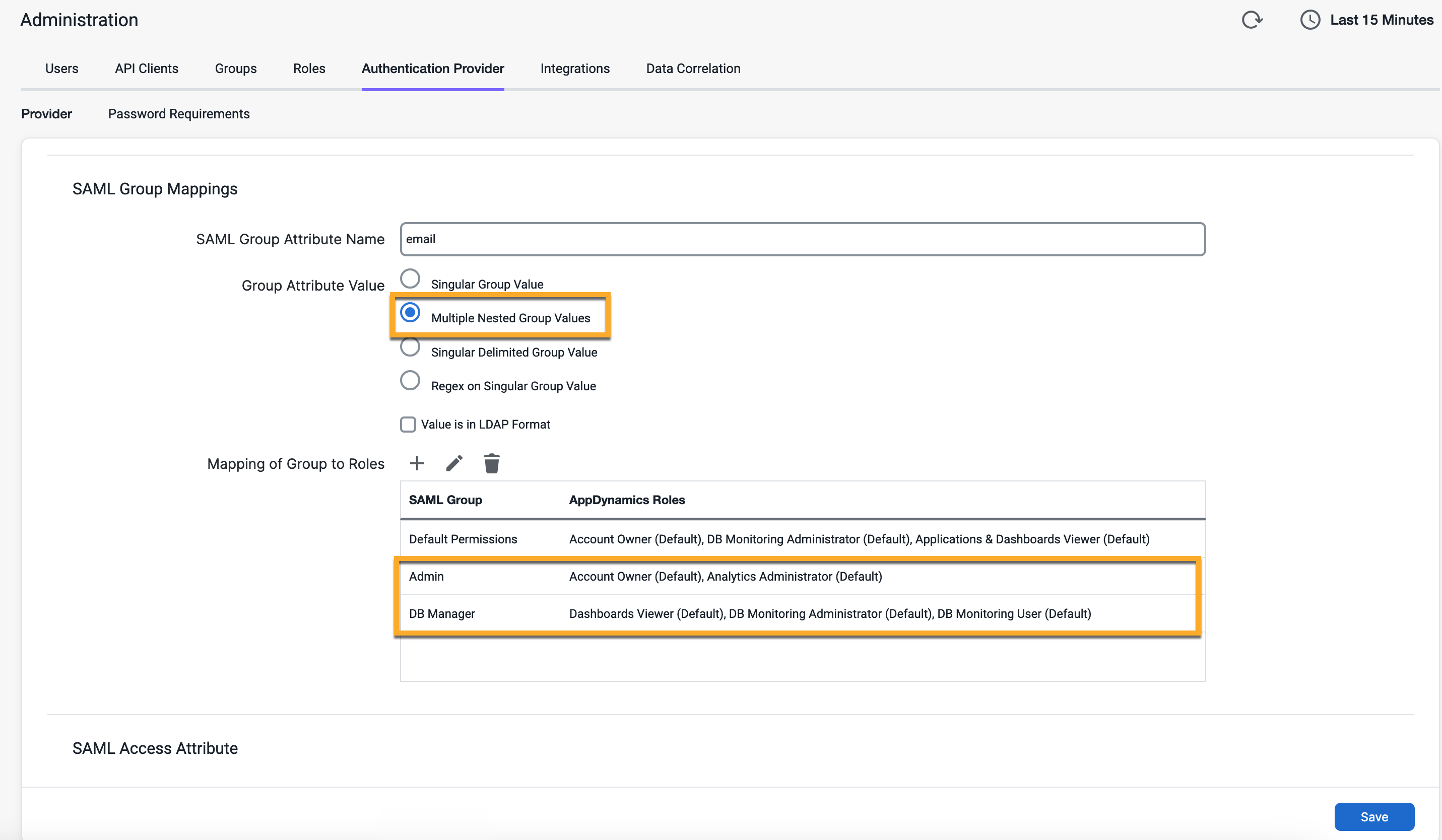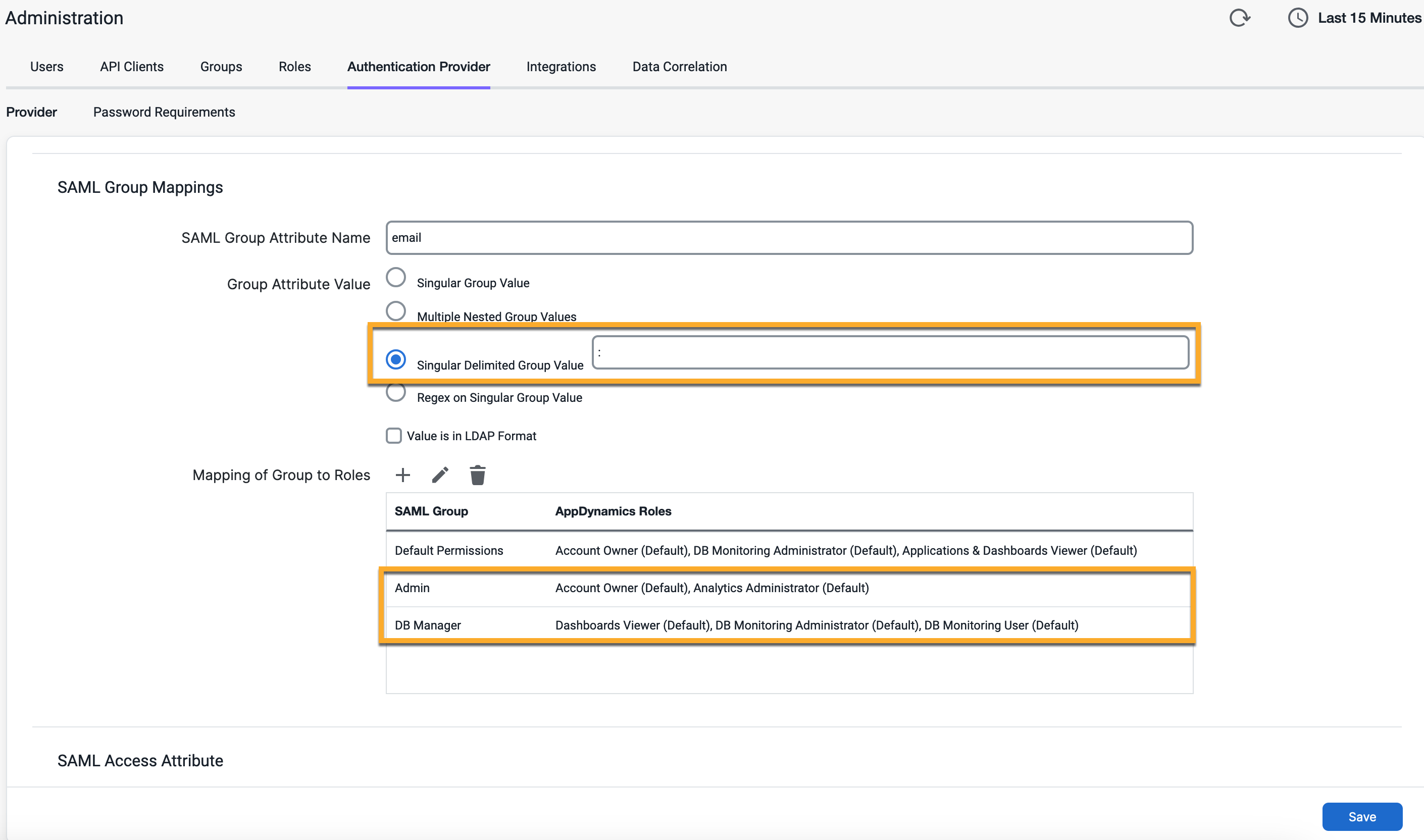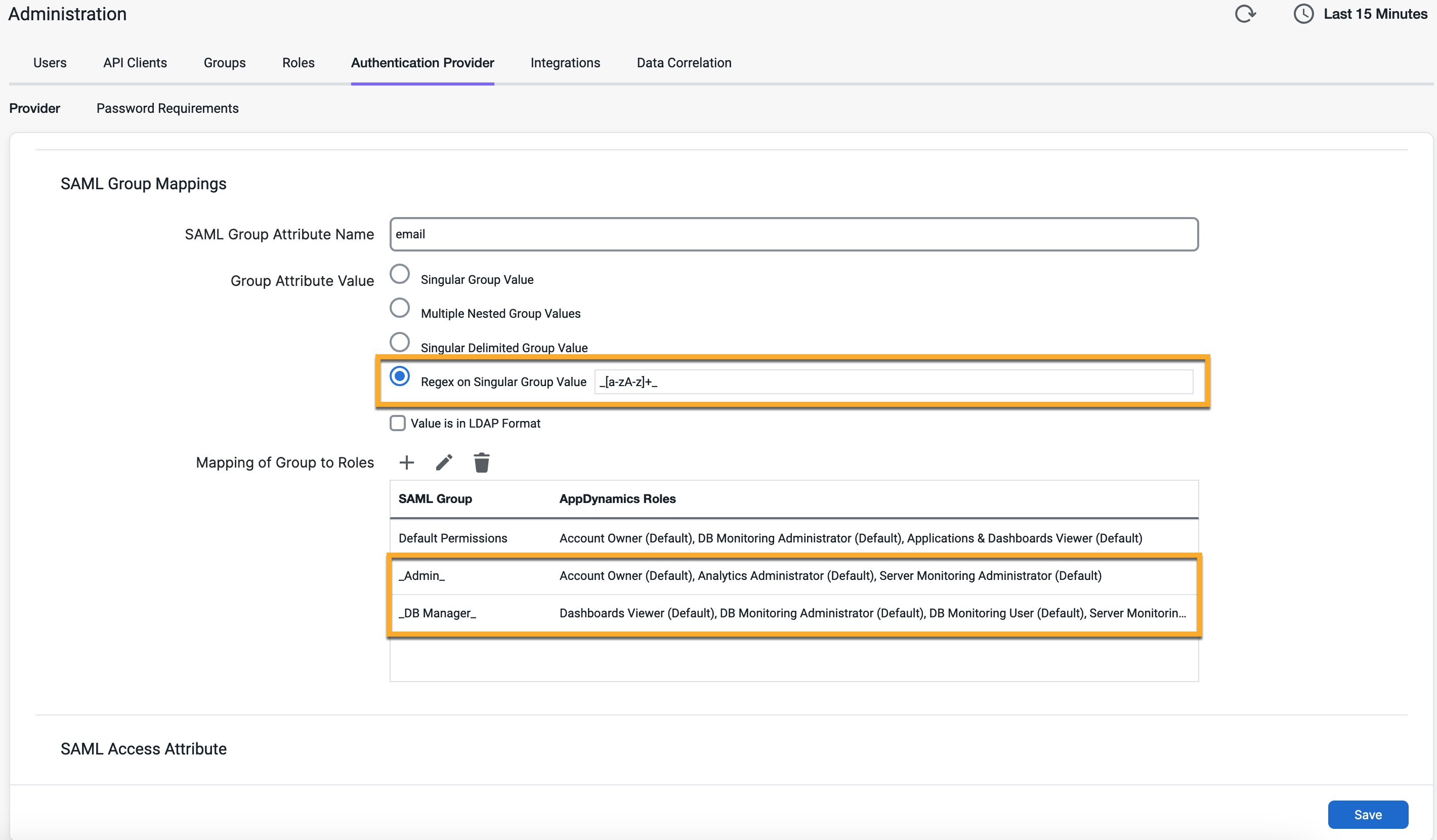Map SAML Group to Splunk AppDynamics Roles - On-Premises
This page describes how to configure Security Assertion Markup Language (SAML) attributes to role mapping and the SAML group attribute value mapping options in your Splunk AppDynamicson-premises environment.
If the identity assertion from the SAML provider includes group names that correspond to Splunk AppDynamics roles, you can configure mappings between those group names and the roles. The SAML Group Mappings settings in SAML Configuration > Authentication Provider control the mappings.
Configure SAML Attribute to Role Mapping
To configure the SAML attribute to role mapping:
SAML Group Mappings
Singular Group Values
Select Singular Group Value if the SAML group attribute contains a single group.
<saml:AttributeStatement>
<saml:Attribute Name="Groups-Membership" NameFormat="urn:oasis:names:tc:SAML:2.0:attrname-format:basic">
<saml:AttributeValue xmlns:xsi="http://www.w3.org/2001/XMLSchema-instance" xsi:type="xs:string">Admin</saml:AttributeValue>
</saml:Attribute>
</saml:AttributeStatement>For this example, Splunk AppDynamics would extract the value Admin

Multiple Nested Group Values
When you select this option, Splunk AppDynamics expects multiple AttributeValue
<saml:Attribute Name="Groups-Membership" NameFormat="urn:oasis:names:tc:SAML:2.0:attrname-format:basic">
<saml:AttributeValue xmlns:xsi="http://www.w3.org/2001/XMLSchema-instance" xsi:type="xs:string">_Admin_</saml:AttributeValue>
<saml:AttributeValue xmlns:xsi="http://www.w3.org/2001/XMLSchema-instance" xsi:type="xs:string">_DBManager_</saml:AttributeValue>
</saml:Attribute>Splunk AppDynamics would extract _Admin_ _DBManager_ _Admin_ _DBManager_

Singular Delimited Group Value
When you select this option, Splunk AppDynamics expects a single AttributeValue
<saml:Attribute Name="Groups-Membership" NameFormat="urn:oasis:names:tc:SAML:2.0:attrname-format:basic">
<saml:AttributeValue xmlns:xsi="http://www.w3.org/2001/XMLSchema-instance" xsi:type="xs:string">Admin;DB-Manager</saml:AttributeValue>
</saml:Attribute>Specify the delimiter that separates the values to extract, such as a semi-colon.
In this sample configuration, the user would get the Splunk AppDynamics roles that associate with both the Admin and DB-Manager groups, such as the Dashboard Viewer, User, and DB Monitoring Administrator.

Regex on Singular Group Value
Choose this option to have Splunk AppDynamics extract group mapping values using a regular expression. Regular expressions enable you to pull group values from unstructured contexts, such as from within a larger string.
<saml:AttributeStatement>
<saml:Attribute Name="Groups-Membership" NameFormat="urn:oasis:names:tc:SAML:2.0:attrname-format:basic">
<saml:AttributeValue xmlns:xsi="http://www.w3.org/2001/XMLSchema-instance" xsi:type="xs:string">User memberships in _Admin_ and _DBManager_ groups.</saml:AttributeValue>
</saml:Attribute>
</saml:AttributeStatement>In this example, the group names _Admin_ _DBManager_ AttributeValue _[a-zA-Z]_ _Admin_ _DBManager_

